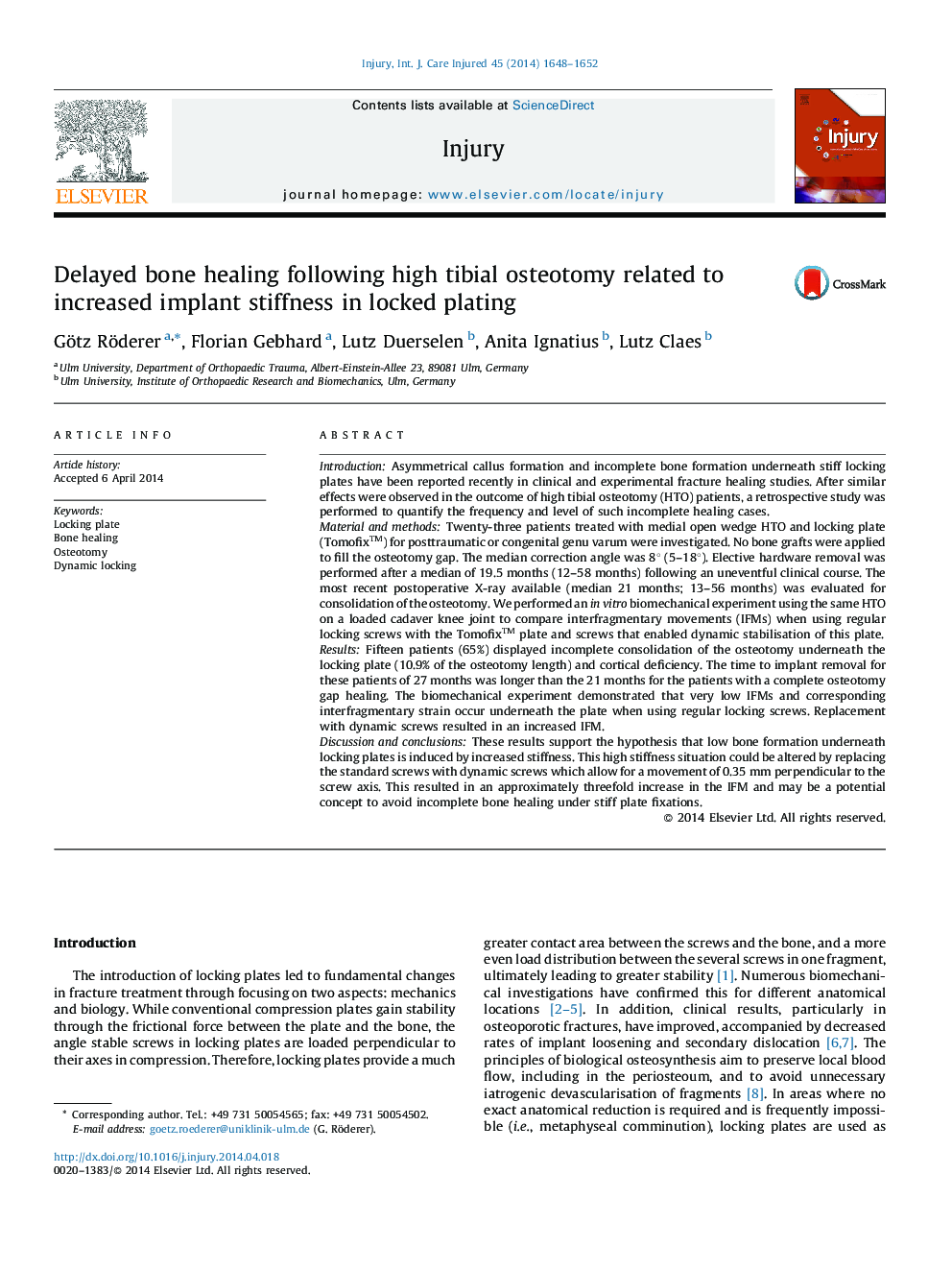| کد مقاله | کد نشریه | سال انتشار | مقاله انگلیسی | نسخه تمام متن |
|---|---|---|---|---|
| 3239523 | 1206008 | 2014 | 5 صفحه PDF | دانلود رایگان |
IntroductionAsymmetrical callus formation and incomplete bone formation underneath stiff locking plates have been reported recently in clinical and experimental fracture healing studies. After similar effects were observed in the outcome of high tibial osteotomy (HTO) patients, a retrospective study was performed to quantify the frequency and level of such incomplete healing cases.Material and methodsTwenty-three patients treated with medial open wedge HTO and locking plate (Tomofix™) for posttraumatic or congenital genu varum were investigated. No bone grafts were applied to fill the osteotomy gap. The median correction angle was 8° (5–18°). Elective hardware removal was performed after a median of 19.5 months (12–58 months) following an uneventful clinical course. The most recent postoperative X-ray available (median 21 months; 13–56 months) was evaluated for consolidation of the osteotomy. We performed an in vitro biomechanical experiment using the same HTO on a loaded cadaver knee joint to compare interfragmentary movements (IFMs) when using regular locking screws with the Tomofix™ plate and screws that enabled dynamic stabilisation of this plate.ResultsFifteen patients (65%) displayed incomplete consolidation of the osteotomy underneath the locking plate (10.9% of the osteotomy length) and cortical deficiency. The time to implant removal for these patients of 27 months was longer than the 21 months for the patients with a complete osteotomy gap healing. The biomechanical experiment demonstrated that very low IFMs and corresponding interfragmentary strain occur underneath the plate when using regular locking screws. Replacement with dynamic screws resulted in an increased IFM.Discussion and conclusionsThese results support the hypothesis that low bone formation underneath locking plates is induced by increased stiffness. This high stiffness situation could be altered by replacing the standard screws with dynamic screws which allow for a movement of 0.35 mm perpendicular to the screw axis. This resulted in an approximately threefold increase in the IFM and may be a potential concept to avoid incomplete bone healing under stiff plate fixations.
Journal: Injury - Volume 45, Issue 10, October 2014, Pages 1648–1652
